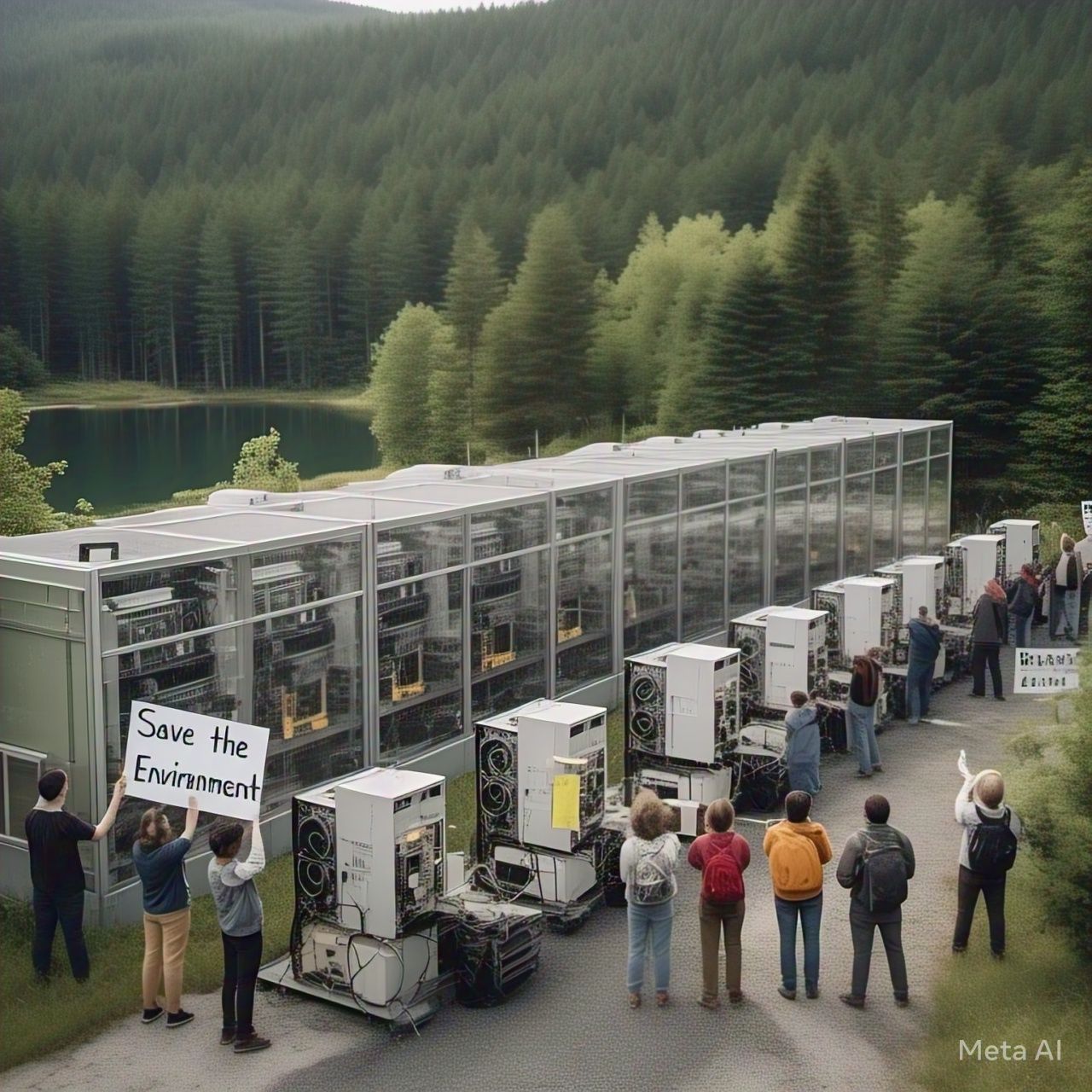Table of Contents
- Introduction
- What is Crypto Mining?
- How Crypto Mining Works
- The Environmental Impact of Crypto Mining
- Energy Consumption in Crypto Mining
- Carbon Footprint of Cryptocurrency Networks
- E-Waste and Hardware Concerns
- Solutions to Crypto Mining’s Environmental Issues
- Renewable Energy in Crypto Mining
- Energy-Efficient Consensus Mechanisms
- Regulations and Policies for Sustainable Mining
- Future of Eco-Friendly Crypto Mining
- Conclusion
- FAQs
1. Introduction
The rapid growth of cryptocurrency has sparked debates about its environmental impact. Crypto mining, the process of validating transactions and securing blockchain networks, requires vast amounts of computational power, leading to high energy consumption and carbon emissions. But is there a way to balance innovation with sustainability? This article explores the environmental concerns surrounding crypto mining and potential solutions for a greener future.
2. What is Crypto Mining?
Crypto mining is the process of validating and adding transactions to a blockchain ledger. Miners use specialized hardware to solve complex mathematical problems, securing the network and earning cryptocurrency rewards. The most well-known mining process is Proof of Work (PoW), used by Bitcoin and several other cryptocurrencies.
3. How Crypto Mining Works
Crypto mining involves several steps:
- Transaction Verification: Miners gather pending transactions into a block.
- Proof of Work Computation: Miners use computing power to solve a cryptographic puzzle.
- Block Addition to Blockchain: The first miner to solve the puzzle adds the block and receives a reward.
- Network Security Maintenance: The decentralized mining process prevents fraud and secures the network.
4. The Environmental Impact of Crypto Mining
Key Environmental Concerns
Crypto mining is energy-intensive, generating a significant carbon footprint. The primary concerns include:
- High electricity consumption from mining farms.
- Carbon emissions from fossil fuel-based energy sources.
- Electronic waste due to rapid hardware obsolescence.
5. Energy Consumption in Crypto Mining
Crypto mining operations consume vast amounts of electricity. According to the Cambridge Centre for Alternative Finance, Bitcoin mining alone uses approximately 120 terawatt-hours (TWh) per year—comparable to the energy consumption of small countries like Argentina.
| Cryptocurrency | Annual Energy Consumption (TWh) |
|---|---|
| Bitcoin (BTC) | ~120 |
| Ethereum (Pre-Merge) | ~80 |
| Dogecoin (DOGE) | ~7 |
| Litecoin (LTC) | ~4 |
6. Carbon Footprint of Cryptocurrency Networks
Many mining operations rely on coal and other non-renewable energy sources, significantly increasing greenhouse gas emissions. Estimates suggest that Bitcoin mining contributes around 50-60 million tons of CO₂ annually, equivalent to emissions from millions of cars.
Factors Affecting Carbon Footprint
- Mining location: Countries using coal-based power (e.g., China, Kazakhstan) have a higher carbon footprint.
- Energy sources: Use of renewable energy reduces emissions.
- Mining equipment: Newer, more efficient hardware consumes less energy.
7. E-Waste and Hardware Concerns
Crypto mining produces significant electronic waste (e-waste) due to rapid hardware obsolescence. ASIC (Application-Specific Integrated Circuit) miners, specialized for mining, have short lifespans and often end up in landfills, contributing to global e-waste.
| Source of E-Waste | Impact |
| ASIC Mining Rigs | High energy demand, short lifespan |
| GPU Mining Equipment | Excess heat generation, frequent upgrades needed |
| Cooling Systems | Increased electricity consumption |
8. Solutions to Crypto Mining’s Environmental Issues
Strategies for Sustainable Crypto Mining
- Switching to Renewable Energy Sources
- Adopting Energy-Efficient Consensus Mechanisms
- Encouraging Carbon Offsetting Initiatives
- Implementing Recycling Programs for Mining Equipment
9. Renewable Energy in Crypto Mining
A promising solution is transitioning mining operations to renewable energy sources, such as:
- Solar Power: Sun-powered mining farms.
- Wind Energy: Wind farms providing clean electricity.
- Hydropower: Efficient energy use from dams and rivers.
- Geothermal Energy: Utilizing Earth’s natural heat.
Examples of Green Mining Initiatives
- El Salvador’s Bitcoin Mining: Uses geothermal energy from volcanoes.
- Canada & Iceland Mining Farms: Rely on hydropower and geothermal energy.
10. Energy-Efficient Consensus Mechanisms
Several blockchain projects are moving away from Proof of Work (PoW) to more sustainable models like:
- Proof of Stake (PoS): Requires validators to stake coins instead of mining (e.g., Ethereum 2.0).
- Delegated Proof of Stake (DPoS): Enhances efficiency with selected node validators.
- Proof of Authority (PoA): Uses reputation-based validation instead of mining.
These alternatives drastically reduce energy consumption and improve sustainability.
11. Regulations and Policies for Sustainable Mining
Governments and regulatory bodies are implementing policies to promote eco-friendly crypto mining:
- China’s Ban on Crypto Mining: Aims to curb high energy consumption.
- U.S. State Regulations: States like New York have proposed restrictions on non-renewable mining.
- European Union’s Environmental Framework: Encourages the use of sustainable energy in blockchain networks.
These efforts aim to reduce mining’s carbon footprint while still allowing innovation.
12. Future of Eco-Friendly Crypto Mining
The future of crypto mining is shifting towards sustainability and efficiency. Emerging trends include:
- Hybrid Energy Models: Combining multiple renewable sources.
- Increased Institutional Investment: Companies investing in green mining solutions.
- Advancements in Hardware Efficiency: Development of low-power mining rigs.
- Greater Decentralization: Reducing reliance on large mining farms.
With continued advancements, crypto mining can become a more sustainable industry without sacrificing blockchain security.
13. Conclusion
Crypto mining has raised significant environmental concerns, but solutions are emerging to mitigate its impact. The shift to renewable energy, energy-efficient consensus mechanisms, and regulatory measures will pave the way for a greener, more sustainable future for the cryptocurrency industry. As the sector evolves, balancing technological growth with environmental responsibility remains a key challenge and priority.
14. FAQs
1. Why does crypto mining consume so much energy?
Crypto mining requires vast computational power to solve cryptographic puzzles, securing the blockchain network.
2. Which cryptocurrencies have the highest environmental impact?
Bitcoin (BTC) and Ethereum (pre-merge) were among the most energy-intensive due to their Proof of Work (PoW) consensus mechanism.
3. How can crypto mining become more sustainable?
Using renewable energy sources, adopting Proof of Stake (PoS), and implementing carbon offset programs can reduce environmental impact.
4. What is Ethereum 2.0’s impact on sustainability?
Ethereum transitioned from Proof of Work (PoW) to Proof of Stake (PoS), reducing its energy consumption by over 99%.
5. Are governments regulating crypto mining?
Yes, some countries have banned or restricted mining, while others are incentivizing renewable energy-based mining operations.




